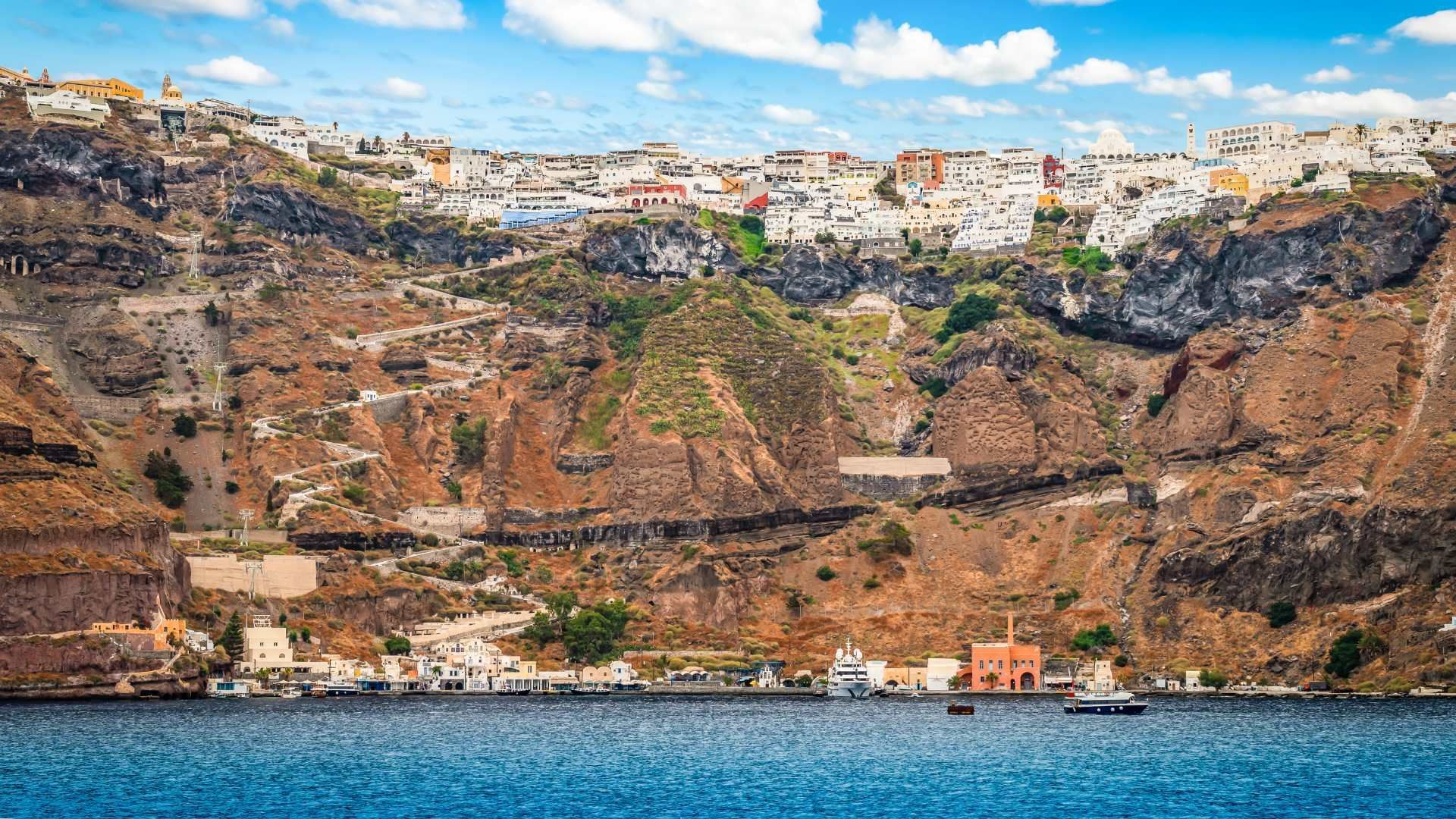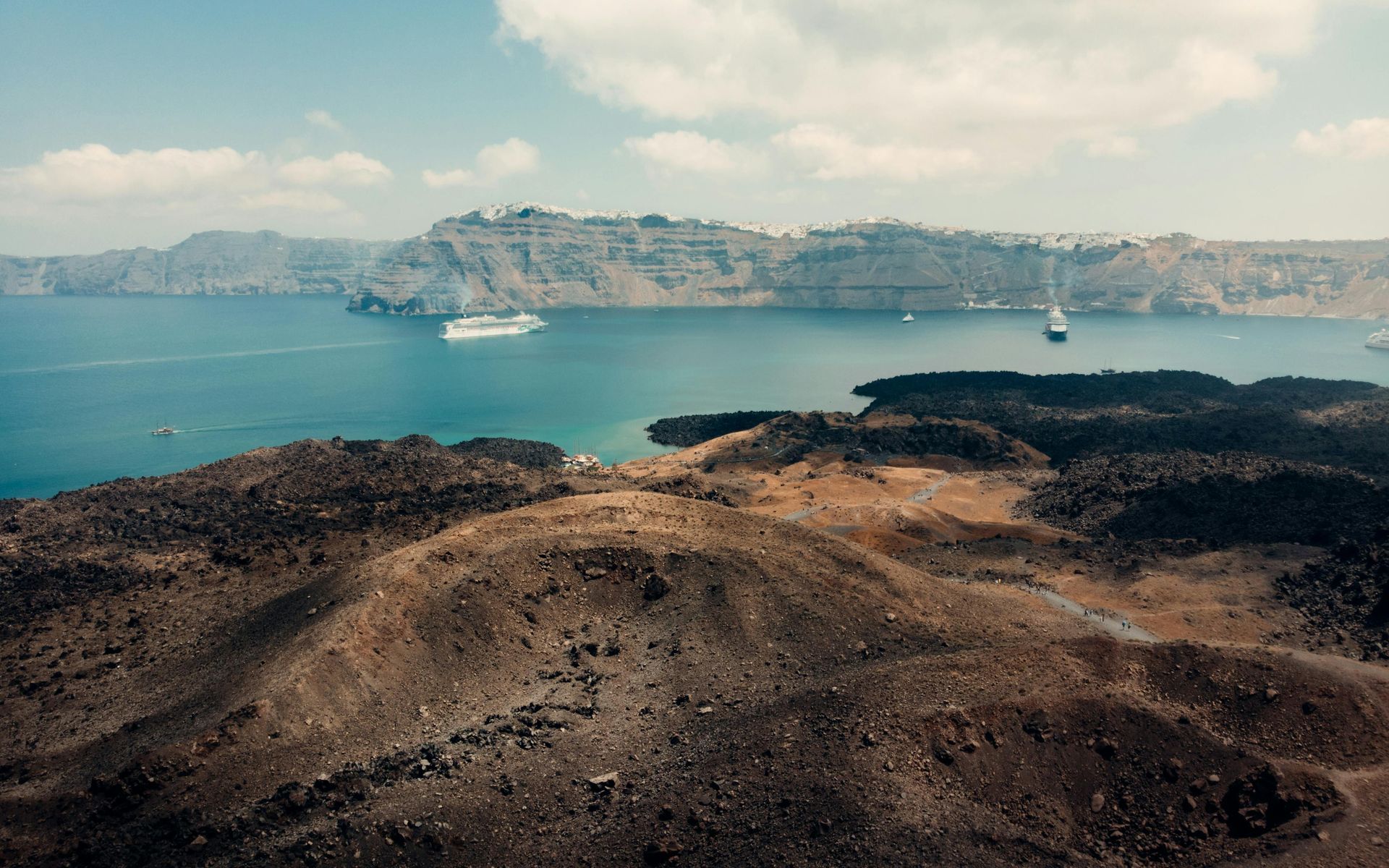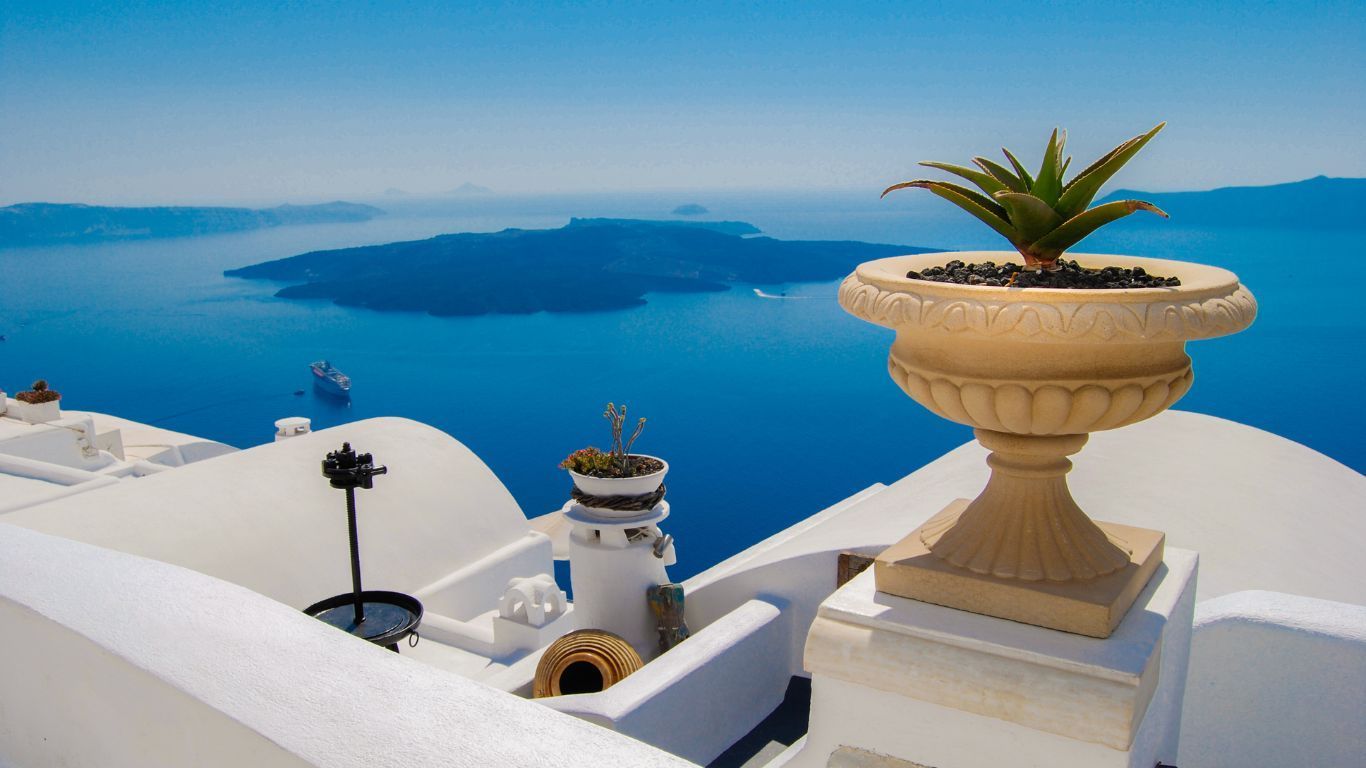Why Santorini is White and Blue?
Santorini Architecture: From Raw Rock to White and Blue Harmony
Santorini is often described as a postcard, but the island’s architecture is much more than a pretty picture. It is a living story — one that begins in volcanic rock and travels through centuries of Venetian rule, Greek identity, and modern reinvention. Every color, every curve, every material carries meaning, connecting the past with the present in ways that still shape the island today.
Oia’s Rainbow Past
Although Santorini is best known for its brilliant white villages, Oia tells a different tale. On its cliffside, houses appear in warm shades of ochre, pink, and orange, mixed with pastel blues. This palette began during Venetian times, when wealthy merchants and ship captains painted their mansions with natural pigments to stand apart from the humbler cave dwellings around them. Later, as Oia grew into a hub of maritime trade, these colors became a symbol of prosperity, a way for sea captains to mark their homes against the deep blue horizon.
Today, those tones remain — a gentle rainbow spilling down the cliffside, reminding visitors of Oia’s days as a proud seafaring village.
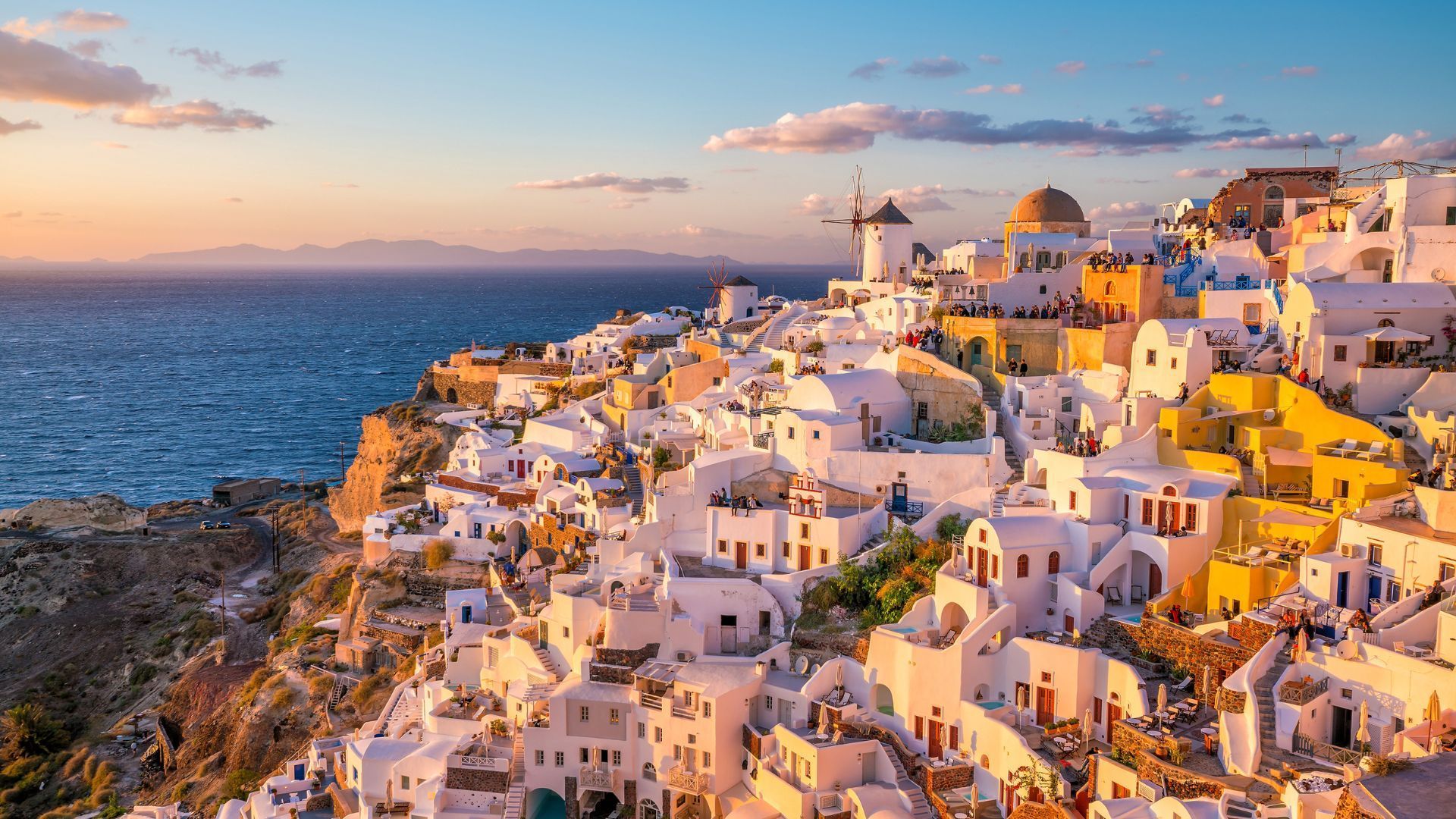
From Venetian Colors to Greek Blue and White
Santorini’s churches once showed softer shades too — pinkish plastered walls paired with pale blue domes, echoing Venetian elegance and Cycladic restraint. But with the birth of the modern Greek state in the 19th century, colors began to shift. Whitewashed walls and blue domes became the new standard, echoing the Greek flag itself.
White was not chosen at random. It reflected the harsh Aegean sun, purified the settlements, and created visual unity across the island’s jagged cliffs. Blue mirrored the sea and sky, honoring the lives of fishermen and sailors whose days and nights were bound to the water. What had once been Venetian softness became Greek boldness, a palette of national pride.
The Raw Homes of the Rock
Yet beneath these painted facades lies a deeper story — the story of Santorini’s cave houses. Carved straight into volcanic cliffs and canyons, these homes were simple, raw shelters. Farmers and sailors who could not afford grand houses made use of what the land gave them. The volcanic rock kept them cool in the searing summer, warm in the winter, and safe from fierce Aegean winds. Thick walls built from lava stone and pumice created protection from earthquakes, while volcanic ash bound everything together. Inside, the spaces were bare, rough, and purely functional.
These were not built for beauty but for survival. And yet, in their raw honesty, they formed one of the most distinctive architectural traditions in the Mediterranean.
From Rough Walls to Minimal Luxury
Fast forward to today, and those same cave houses have been reborn as symbols of luxury. Their raw rock interiors are now smoothed and sculpted with modern plasters. Builders use lime mixed with micro-cement to create flowing, molten-like surfaces that seem to melt into the curves of domes and archways.
What was once rough and porous has become soft and seamless. The caves that sheltered farmers and sailors now host travelers in minimalist sanctuaries, complete with glowing alcoves, hidden pools, and soft white walls that reflect the volcanic light. The technique is modern, but it feels true to the island, echoing the ancient stoko plasters made from pumice and ash, while giving them a contemporary soul.
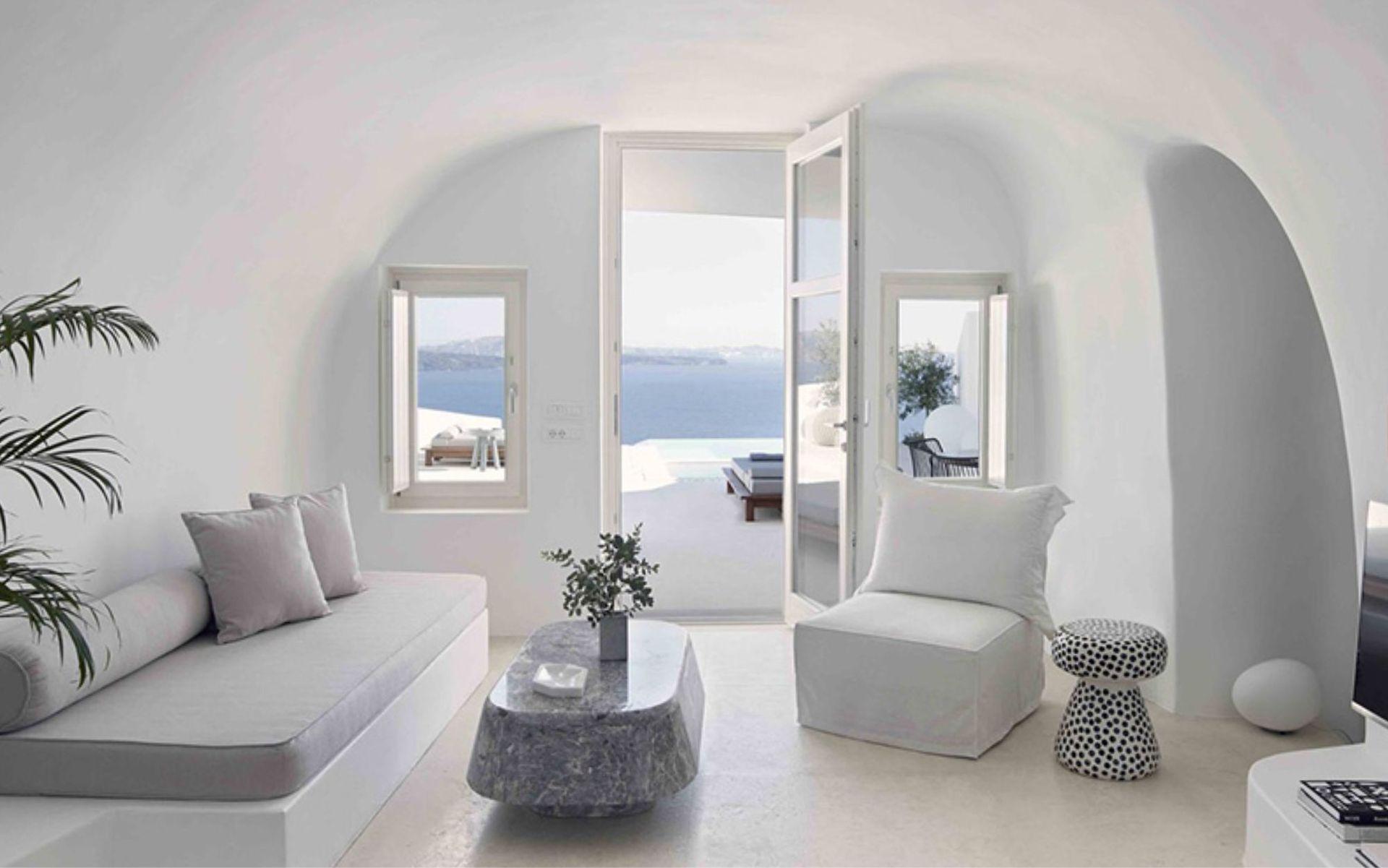
Materials Born from Fire
The secret to all of this lies in the land itself. Santorini’s architecture has always been volcanic at heart. Lava stone formed the skeleton of houses and fortifications. Pumice, light and porous, was ground into plaster to insulate walls. Volcanic ash mixed with lime created natural mortars that were flexible enough to survive earthquakes. Even limestone played its role, blended into whitewash that gave villages their dazzling brightness.
These materials were not imported; they were born from the very eruptions that shaped the island. Each house was, quite literally, part of the caldera. Even now, restorers and architects rely on them — stone facades, lime-based paints, and volcanic aggregates — because they keep Santorini’s buildings both authentic and enduring.
A Culture Painted in White and Blue
To walk through Santorini’s villages is to walk through layers of history. The rainbow colors of Oia whisper of Venetian trade. The white-and-blue churches tell of Greek independence and the eternal life of sailors at sea. The cave houses show resilience, carved from ash and pumice by hands that built with necessity rather than luxury. The modern plastered villas reveal reinvention, where tradition bends into minimal elegance.
Santorini’s architecture is not just about walls and roofs — it is about identity, survival, and pride. It is about a people who used fire-born stone to build homes, who turned hardship into beauty, and who painted their world in the colors of sea and sky.
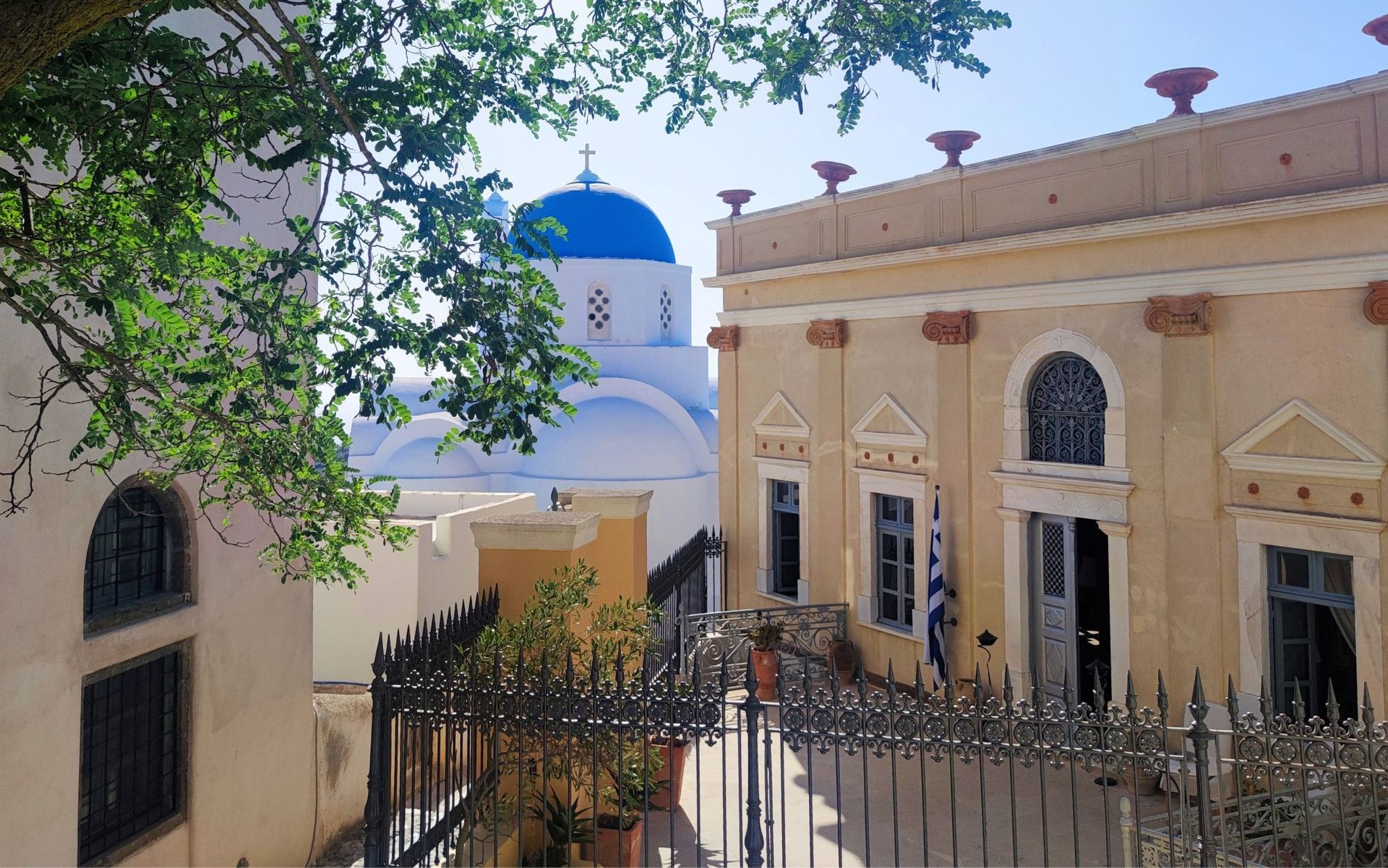
Materials Born from Fire
The secret to all of this lies in the land itself. Santorini’s architecture has always been volcanic at heart. Lava stone formed the skeleton of houses and fortifications. Pumice, light and porous, was ground into plaster to insulate walls. Volcanic ash mixed with lime created natural mortars that were flexible enough to survive earthquakes. Even limestone played its role, blended into whitewash that gave villages their dazzling brightness.
These materials were not imported; they were born from the very eruptions that shaped the island. Each house was, quite literally, part of the caldera. Even now, restorers and architects rely on them — stone facades, lime-based paints, and volcanic aggregates — because they keep Santorini’s buildings both authentic and enduring.
Experience Santorini Beyond the Postcard
Reading about Santorini is one thing — but standing inside a cave house, touching volcanic stone walls, or gazing up at the glowing blue domes is another.
On our private Santorini tours, we don’t just show you the postcard view — we guide you through the stories behind the walls, colors, and traditions.
👉 Explore Santorini with us and walk inside the story!



